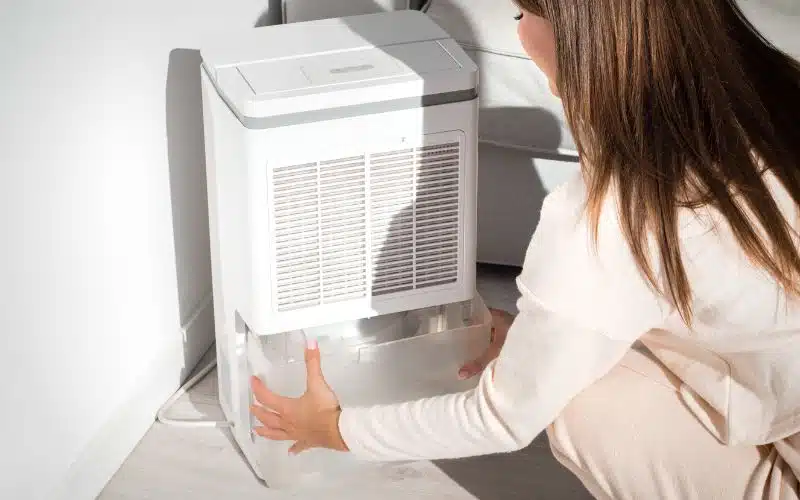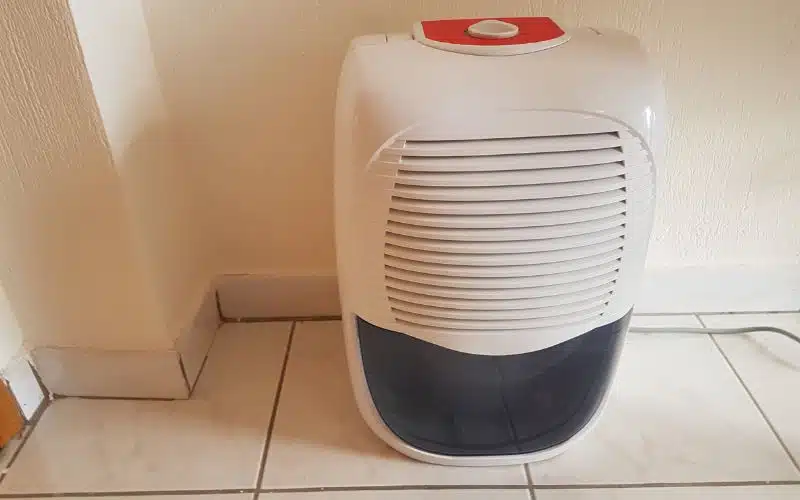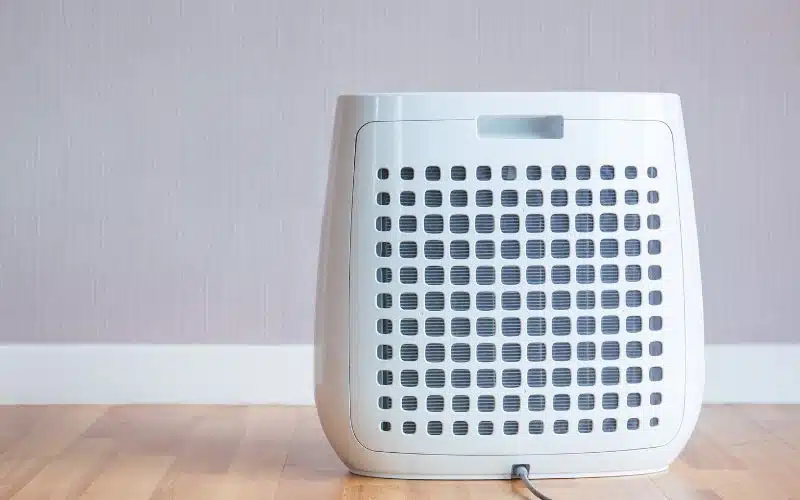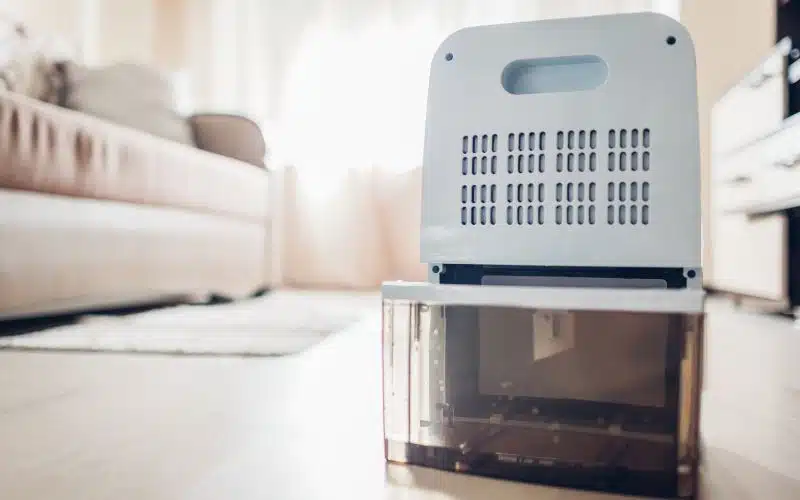Hisense dehumidifiers are essential appliances that regulate indoor humidity levels, creating a more comfortable living environment.
Understanding household appliances’ energy requirements is crucial in an era where energy efficiency is paramount.
When selecting a dehumidifier, energy efficiency is a key consideration; it impacts the appliance’s operating costs and environmental impacts.
Therefore, as consumers become increasingly conscious of energy consumption, providing an explanatory guide on Hisense dehumidifiers’ energy usage is important.
The energy consumption of Hisense dehumidifiers can vary depending on the specific model and its settings. Energy consumption is generally measured in watts or kilowatts per hour (kWh). Therefore, on average, the Hisense dehumidifier’s energy usage ranges between 10.24KWh- 23.6KWh. The Energy Star Certified model’s energy usage falls between 1.5 and 13.14.
In this article, I will unveil how much energy Hisense dehumidifiers consume. I will also explore the factors influencing their energy usage and tips for optimizing energy consumption.
By the end, you can make informed choices regarding energy-efficient Hisense dehumidifiers.
How Much Energy Do Hisense Dehumidifiers Consume?
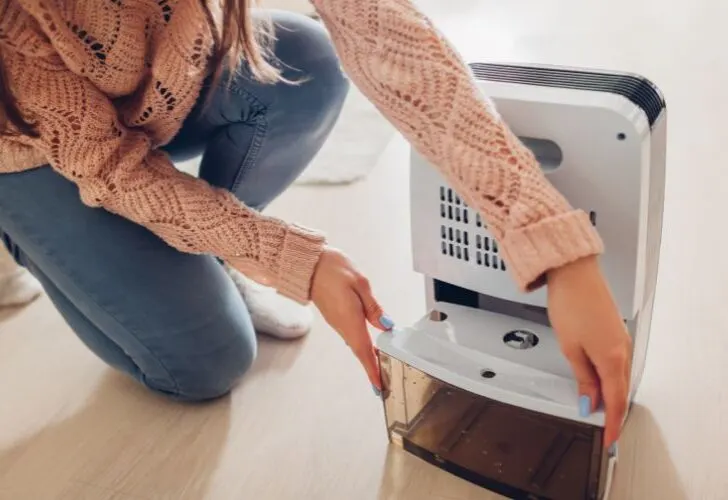
On average, standard Hisense dehumidifiers consume energy between 10.24 KWh and 23.6 KWh. However, the energy usage of the Energy Star Certified models falls between 1.5 and 13.14.
Meanwhile, regardless of the models, it’s worth noting that several factors contribute to the energy consumption of Hisense dehumidifiers.
They include:
#1. Capacity and Humidity Levels
The size and capacity of a dehumidifier impact its energy usage. Larger units might consume more energy to dehumidify larger spaces.
Moreover, the initial humidity level in a room influences how often and how long the dehumidifier needs to run. Higher initial humidity levels typically lead to longer operation times.
#2. Room Size and Climate
The dimensions of the room affect the energy efficiency of the dehumidifier. Larger rooms may require the unit to run longer to achieve the desired humidity level.
Also, the climate in which the dehumidifier operates matters. Dehumidifiers in humid regions might run more frequently than those in drier areas.
#3. Operating Settings
Different settings, such as fan speed and humidity level settings, can impact energy consumption.
Higher fan speeds and lower humidity settings may increase energy usage.
To minimize the energy consumption of your Hisense dehumidifier, consider the following tips:
- Choose a dehumidifier with an appropriate capacity for the room size. An oversized unit may lead to unnecessary energy use.
- Set the humidity level to a reasonable level (around 30-80%) to balance comfort and energy consumption.
- Position the dehumidifier away from obstructions and walls for optimal air circulation.
- Clean and maintain the unit as the user manual recommends to ensure efficiency.
Are Hisense Dehumidifiers Energy Star Certified?
Yes, some Hisense dehumidifiers are Energy Star certified.
Hisense dehumidifier models, such as HT5021KP, DH5023KP, DH7021W1WG, DH-35K1SJE5, and many more are Energy-Star certified.
This certification underscores the brand’s dedication to producing energy-efficient appliances contributing to a more sustainable future.
Energy Star Certification is a government-backed program that the United States Environmental Protection Agency (EPA) initiated.
Energy Star aims to promote energy efficiency and reduce emissions.
Any products that bear the Energy Star label meet strict criteria for energy consumption without compromising performance.
The certification signifies that a product is energy-efficient and environmentally friendly.
When you choose an Energy Star-certified Hisense dehumidifier, you can enjoy optimal humidity control while reducing your energy bills and environmental impact.
Hisense, renowned for its innovative technology and having its consumers in mind, has demonstrated a strong commitment to energy efficiency.
The brand recognizes the significance of reducing energy consumption without compromising the effectiveness of its products.
As such, Hisense has pursued Energy Star certification for its dehumidifiers, aligning with its broader sustainability goals.
It’s worth noting that there are numerous benefits of choosing Energy Star-certified Hisense dehumidifiers, and here are some:
#1. Energy Savings and Environmental Impact
Energy Star-certified dehumidifiers, including Hisense ones, use up to 30% less energy than non-certified models.
This energy efficiency translates to lower utility bills and reduced energy consumption.
Furthermore, by selecting an Energy Star-certified product, such as a Hisense dehumidifier, you contribute to reducing greenhouse gas emissions and climate change.
#2. Performance Assurance
Energy Star certification doesn’t compromise performance. Hisense dehumidifiers provide efficient humidity control while maintaining their high-quality performance.
In a nutshell, regarding home appliances, making informed choices that benefit both the environment and your pocket is paramount.
Hisense Energy-Star-certified dehumidifiers exemplify this principle, offering you a balance between effective humidity control and energy efficiency.
Check the table below for the differences between Energy Star-certified dehumidifiers and non-certified ones.
| Energy-Star Certified Dehumidifiers | Non-Certified Dehumidifiers |
|---|---|
| High efficiency, lower energy consumption. | They are less efficient with higher energy usage. |
| Consistent moisture removal. | Variable performance levels. |
| Reduction in greenhouse gas emissions. | Potential higher emissions. |
| Lower energy bills over time. | Higher energy costs. |
| They meet strict energy efficiency criteria. | They are not guaranteed to meet energy standards. |
| Positive reputation for energy efficiency. | Reputation may vary. |
This table highlights that choosing a Hisense dehumidifier with the Energy Star label allows you to enjoy a comfortable living space while participating in the global pursuit of sustainability.
Are Hisense Manual Dehumidifiers More Efficient?
Yes, Hisense manual dehumidifiers are often more energy efficient than automatic dehumidifiers.
As the name suggests, manual dehumidifiers require manual operation, including adjusting settings and emptying the water collection bucket.
Consumers often chose them for their simplicity, lower initial cost, and suitability for smaller spaces.
Hisense manual dehumidifiers often come at a more affordable price than their electronic counterparts. Their cost makes them an attractive option for budget-conscious consumers.
Also, manual dehumidifiers require straightforward maintenance, involving emptying the water tank and cleaning the filters. This simplicity contributes to their overall efficiency.
In addition, many Hisense manual dehumidifiers are portable. Their compact size and lightweight nature make them easy to move between rooms that need humidity control.
Hisense emphasizes energy efficiency in its products. So, due to manual models’ features, many consume less energy, resulting in lower utility bills while maintaining effective humidity control.
Meanwhile, while considering the benefits of manual Hisense dehumidifiers, you must know their drawbacks too. The primary drawback of manual dehumidifiers lies in their manual operation.
You must adjust settings and empty the water bucket regularly; this may be inconvenient if you seek a more automated solution.
Furthermore, manual dehumidifiers often lack advanced features like built-in hygrometers or auto-defrost mechanisms that electronic models offer.
These features can enhance overall efficiency and user experience.
In evaluating the efficiency of Hisense manual dehumidifiers, it’s evident that they offer several benefits, such as affordability, easy maintenance, and portability.
However, their efficiency depends on diligent manual operation and the absence of certain advanced features.
The latter may offer greater automation and enhanced features at a higher cost when comparing manual dehumidifiers to electronic ones.
Which Hisense Dehumidifier Model Is Most Energy Efficient?
Hisense offers several options that balance effective moisture removal with low energy consumption.
Models like the Hisense DH35K1SJE5, DH 50K1SJUE15, DH7021W1WG, DH70K1G, and DH5023KP, DH3020K1W, DH5022K1W, are incredibly energy efficient.
In addition, Hisense DH 7021KP1G, DH5023KP, DH3524K1W, and HT5021KP, are also energy efficient.
- Compact size is ideal for smaller spaces, Quiet...
- Easy-carry handle for portability, Works...
- Meets ENERGY STAR standards, saving on energy...
- Auto shut-off stops collecting water when full,...
- Compact size for smaller spaces, easy to move...
- Low noise airflow system to ensure quiet...
- Sturdy built-in pocket handles, Operates at...
- Bucket full indicator avoids overflows and lets...
- Dehumidifier removes up to 50 pints of moisture...
- Designed for indoor spaces up to 1000 square feet
- Operates at very low temperature (38F Degree) -...
- Electronic controls with digital display and...
Last update on 2024-01-05 / Affiliate links / Images from Amazon Product Advertising API
All these models and more are Energy Star certified, and they efficiently remove excess moisture from rooms while consuming minimal energy.
You may be curious about what energy efficiency is. Energy efficiency is a key consideration when selecting a dehumidifier.
It directly impacts the operating cost and environmental footprint of the appliance.
You can determine your Hisense dehumidifier’s energy efficiency by the moisture extraction rate per unit of energy consumed.
The higher the extraction rate and the lower the energy consumption, the more energy-efficient the dehumidifier.
Note that when comparing Hisense dehumidifiers for energy efficiency, it’s essential to consider factors such as extraction rate (pints/day), coverage area, and energy consumption (watts).
The “Energy Factor” (EF) is a metric often used to compare dehumidifiers’ efficiency, indicating how many pints of water the humidifiers remove per kWh of energy consumed.
A higher EF value signifies better energy efficiency.




